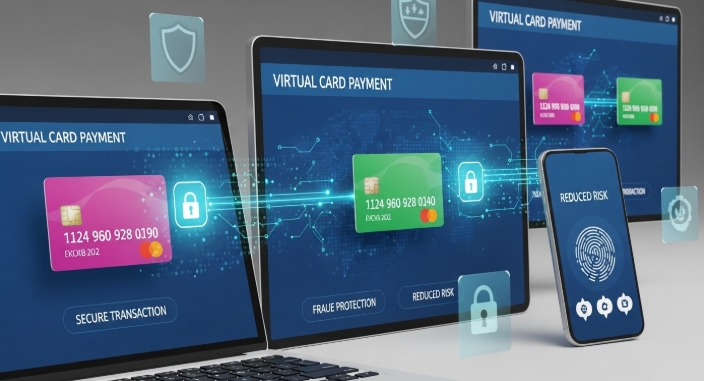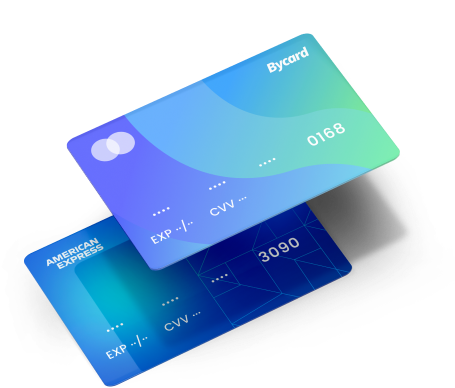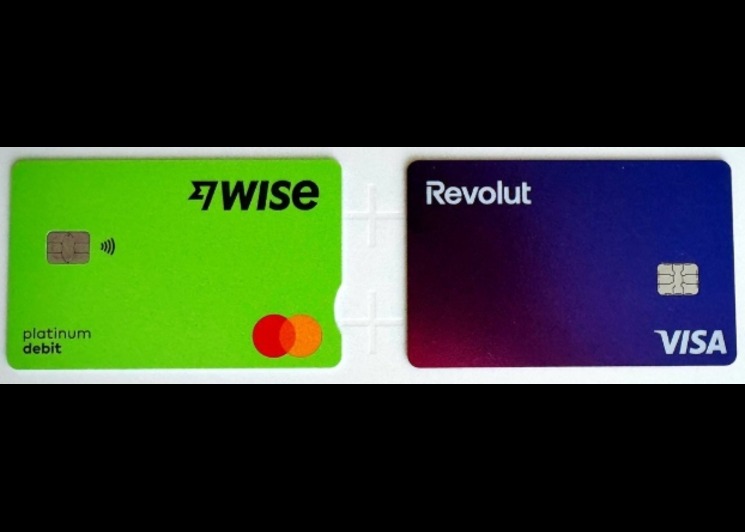Payment Security Guide: The Role of Tokenization, AI, and Biometric Authentication

Payment security has become a major concern as digital transactions grow. Businesses now face rising payment fraud attempts, frequent data breaches, and fast-evolving threats. Modern protection relies on layered security like tokenization, AI-driven checks, and biometric authentication to keep transactions safe without slowing users down. With attackers using automation, social engineering, and stolen credentials, payment security must be smarter, faster, and more adaptive to protect both consumers and businesses across every payment channel.
- Payment Security Guide: The Role of Tokenization, AI, and Biometric Authentication
- Why Payment Fraud Is Rising and How Fraud Detection Helps
- Data Breaches and Their Impact on Payment Security and Fraud Detection
- How Tokenization Stops Payment Fraud and Minimizes Damage From Data Breaches
- How Bycard Reduces Payment Fraud After Data Breaches
- Using AI to Strengthen Fraud Detection and Data Breaches
- Biometrics for Payment Security and Fraud Detection
- Steps to Protect Payments Fraud and Data Breaches
Why Payment Fraud Is Rising and How Fraud Detection Helps
Payment fraud continues to rise because digital transactions give criminals more entry points than ever. Card-not-present scams, merchant impersonation, bot-driven attacks, and fake refund claims have shifted the threat landscape. Businesses now face payment fraud attempts every day, and without strong payment security, these attacks can slip through unnoticed.
Fraud detection used to rely on static rules, but modern attackers move quicker than rule-based systems can respond. Today’s fraud detection tools use machine learning, pattern recognition, and behavioral analysis to make real-time decisions. These systems strengthen payment security by spotting unusual activities instantly, from suspicious spend spikes to device changes and location mismatches.
Data Breaches and Their Impact on Payment Security and Fraud Detection
Data breaches have become one of the biggest threats to payment security. A single breach can expose thousands of card numbers, personal identities, or login credentials. Once that information is leaked, criminals reuse it across multiple platforms, forcing businesses to rebuild trust and reinforce their fraud detection systems.
The impact goes beyond financial loss. Data breaches overwhelm fraud detection engines because stolen details circulate for months, sometimes years. Even companies with strong payment security feel the ripple effects. That’s why organizations increasingly treat data breaches as a matter of “when,” not “if.”
The most effective approach is layering: tokenization to protect raw card data, AI-driven fraud detection to catch unusual activities, and biometric authentication to stop account takeovers. Together, these layers ensure that even if a data breach occurs, payment fraud doesn’t automatically follow.
How Tokenization Stops Payment Fraud and Minimizes Damage From Data Breaches
Tokenization is one of the strongest tools for modern payment security because it replaces sensitive card numbers with random tokens that cannot be reused outside the original environment. Instead of storing actual card details, businesses work with tokens, which dramatically reduces payment fraud attempts and limits the fallout from data breaches.
Tokenization strengthens payment security by:
- Removing sensitive card details from systems
- Preventing attackers from reusing stolen data
- Helping fraud detection systems identify unusual token behaviour
- Making breaches less harmful because real numbers are never exposed
For businesses processing large volumes of transactions, tokenization builds resilience. Even if a data breach happens, attackers end up with useless data. This gives fraud detection systems more clarity and reduces payment fraud significantly.
How Bycard Reduces Payment Fraud After Data Breaches

Bycard improves payment security by combining virtual-card isolation with multi-BIN support across Visa and Mastercard. Multiple BINs give businesses better acceptance, stronger routing reliability, and added protection from automated fraud since attackers cannot rely on a single predictable card range.
The platform also issues instant virtual cards for ad spend and online payments, allowing teams to separate transactions across Facebook Ads, Google Ads, TikTok, LinkedIn, Snapchat, and more. Each card functions as its own secure payment identity, reducing exposure if a vendor is breached.
Key security controls include:
- Per-card spending limits
- Instant card activation
- Lock/unlock controls
- Clear receipt management and reconciliation
Because each virtual card has a specific purpose, unusual activity becomes easier to identify. This improves fraud detection, limits the damage of data breaches, and keeps business payments safer without disrupting team workflows.
Using AI to Strengthen Fraud Detection and Data Breaches

AI has become indispensable for payment security because it analyses huge volumes of data in milliseconds. Fraud detection systems powered by AI can monitor device fingerprints, behavioural patterns, transaction history, and location signals all at once.
Modern payment security platforms use AI to:
- Detect payment fraud in real time
- Flag unusual transactions based on behaviour
- Spot early signs of data breaches
- Reduce false declines that frustrate customers
- Predict risks before they turn into losses
While Bycard publicly highlights its strong fraud protection and data security features, the platform’s card-level controls, spending limits, and structured reconciliation already support AI-powered fraud detection. These controls provide clean, organized transaction data, which fraud detection engines rely on to make accurate decisions.

Perfect Card for Secured Payments!

Biometrics for Payment Security and Fraud Detection
Biometric authentication adds another layer of security by relying on something only the user has, their fingerprint, face, or voice. Unlike passwords, biometric data cannot be easily stolen during data breaches and provides a more reliable barrier against account takeovers.
Biometrics support payment security by:
- Reducing unauthorized access
- Stopping attackers who rely on stolen passwords
- Improving fraud detection accuracy
- Lowering the success rate of payment fraud attempts
While platforms like Bycard strengthen transaction-level payment security through virtual cards, spending controls, and reconciliation tools, pairing those systems with biometric authentication for admin access creates a stronger shield. With both layers working together, data breaches become less damaging and payment fraud becomes significantly harder to execute.
Steps to Protect Payments Fraud and Data Breaches
Improving payment security doesn’t require a full system overhaul. Many steps are simple yet highly effective.
Here are practical actions businesses can take:
- Use tokenization or virtual-card systems like Bycard to limit exposure during data breaches.
- Introduce AI-powered fraud detection tools to spot unusual activity in real time.
- Adopt biometric authentication for sensitive account access.
- Set clear spending limits and per-card controls, something Bycard supports immediately.
- Encrypt data at every stage to strengthen payment security.
- Monitor activity logs for signs of data breaches such as failed logins or unusual requests.
Review card usage regularly with reconciliation tools, especially helpful with Bycard’s structured reporting.
Conclusion
Payment security now requires more than one protective layer. The rise in payment fraud and continuous data breaches means businesses need solutions that adapt quickly. Tokenization reduces exposure, AI strengthens fraud detection, biometrics secure access, and platforms like Bycard give companies real-world tools to isolate transactions and control risk.
When these elements work together, payment security becomes far more effective. Fraud detection improves, the impact of data breaches declines, and customers feel safer without dealing with friction.







